Wartime Conscription
What is Conscription?
“conscription, n.
The compulsory enlistment of civilians for military service; an instance of this. (Now the usual sense.)”
Oxford English Dictionary
Before WWI
The United Kingdom did not utilize conscription before WWI, instead relying on enlistment drives and propaganda to encourage men to take personal responsibility and volunteer.
WWI Conscription
Parliament did not immediately choose the responsibility of conscription. It was implemented two years after the start of the war due to incredible losses.
“The time has come for combined effort to stimulate and organize public opinion and public effort in the greatest conflict in which our people has ever been engaged…No one who can contribute anything to the accomplishment of this supremely urgent task is justified in standing aside.”
Sir Charles Johnston, 1st Baronet, Lord Mayor of London, 1914
“Within a year of Great Britain declaring war on Germany in August 1914, it had become obvious that it was not possible to continue fighting by relying on voluntary recruits.”
Unknown author, UK Parliament
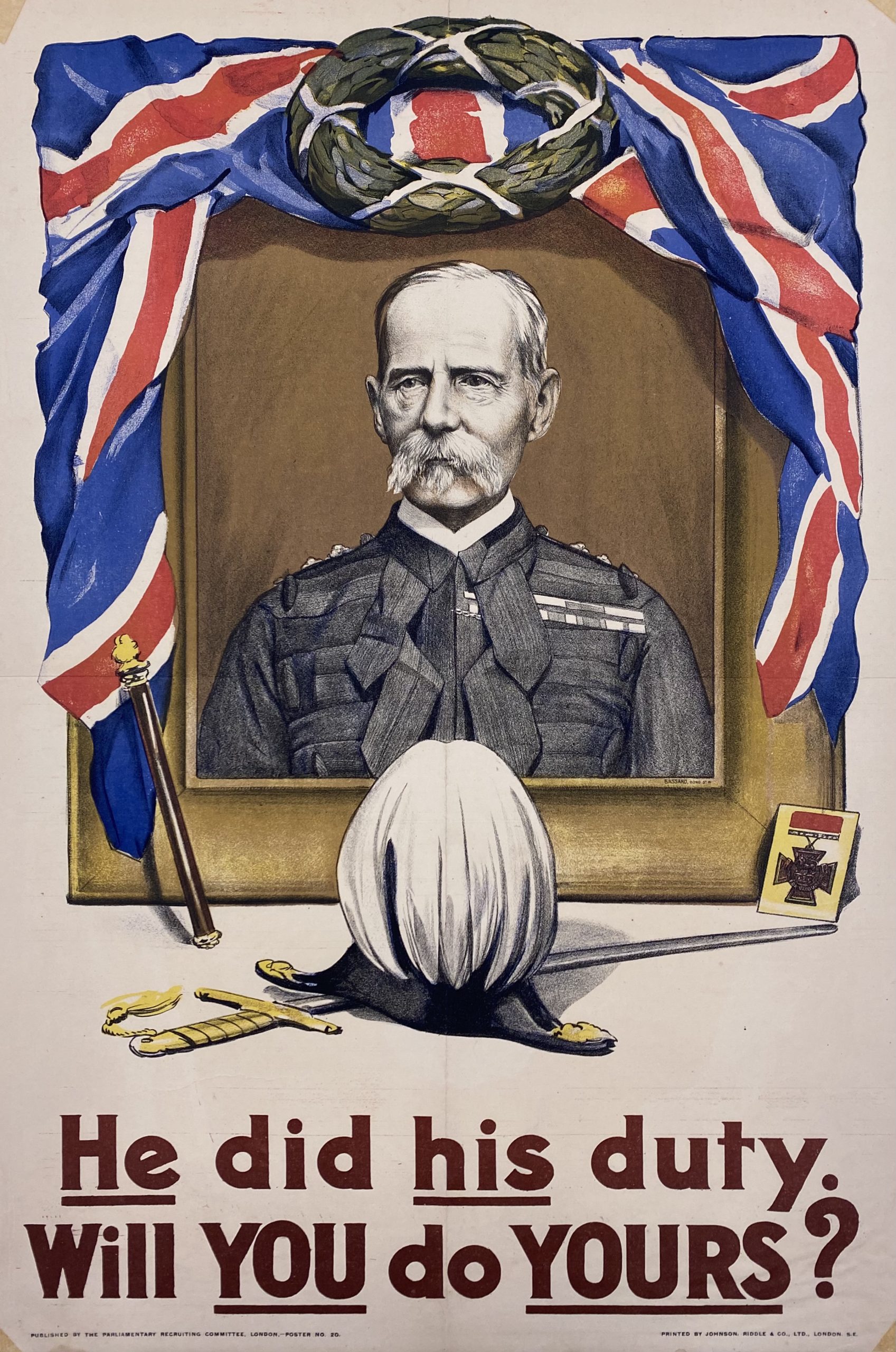
WWI political cartoon, 1914
Madison Exhibits
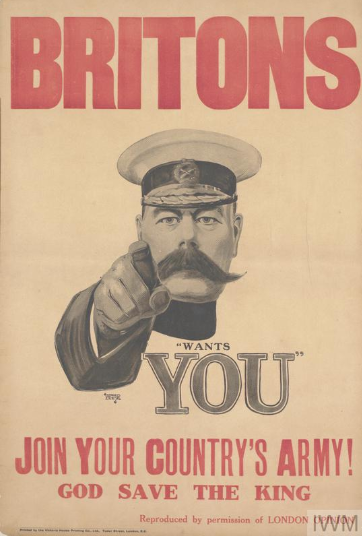
WWI propoganda poster, 1914
Imperial War Museums
After much debate, the Military Service Act was passed. At first, it only affected unmarried men between the ages of 18 and 41, but it was later revised to include both married and unmarried men. The final change adjusted the age limit from 41 to 51.
“27 January 1916 was a watershed moment in modern British history. The Military Service Act was passed, enforcing compulsory military service for the first time on British society.”
David Langrish, National Archives Blog
“During the whole of the war conscription had raised some 2.5 million men.”
Unknown author, UK Parliament
Violation of Rights
Not everyone was on board, however. Conscientious objectors felt that by forcing them to enlist, the government was violating their rights to choose whether or not to join, prioritize their religious obligations, and make choices based on their morals. Although they could appear before a tribunal in the hopes of becoming exempt, the tribunals often ignored their arguments and forced conscientious objectors to perform the same responsibilities as regular soldiers, even if it went against their beliefs.
“At the tribunal's discretion exemption could be absolute, from combatant service only, or conditional on undertaking work of national importance; but [conscientious objectors] were frequently rejected by the local tribunal or offered an unacceptable position.
They could then go before an appeals tribunal and if they were refused again they could appeal to the Central Tribunal in London. Once [a conscientious objector] was refused exemption, he was considered to have enlisted into military service.”
Margaret Brooks, 1988, Imperial War Museums
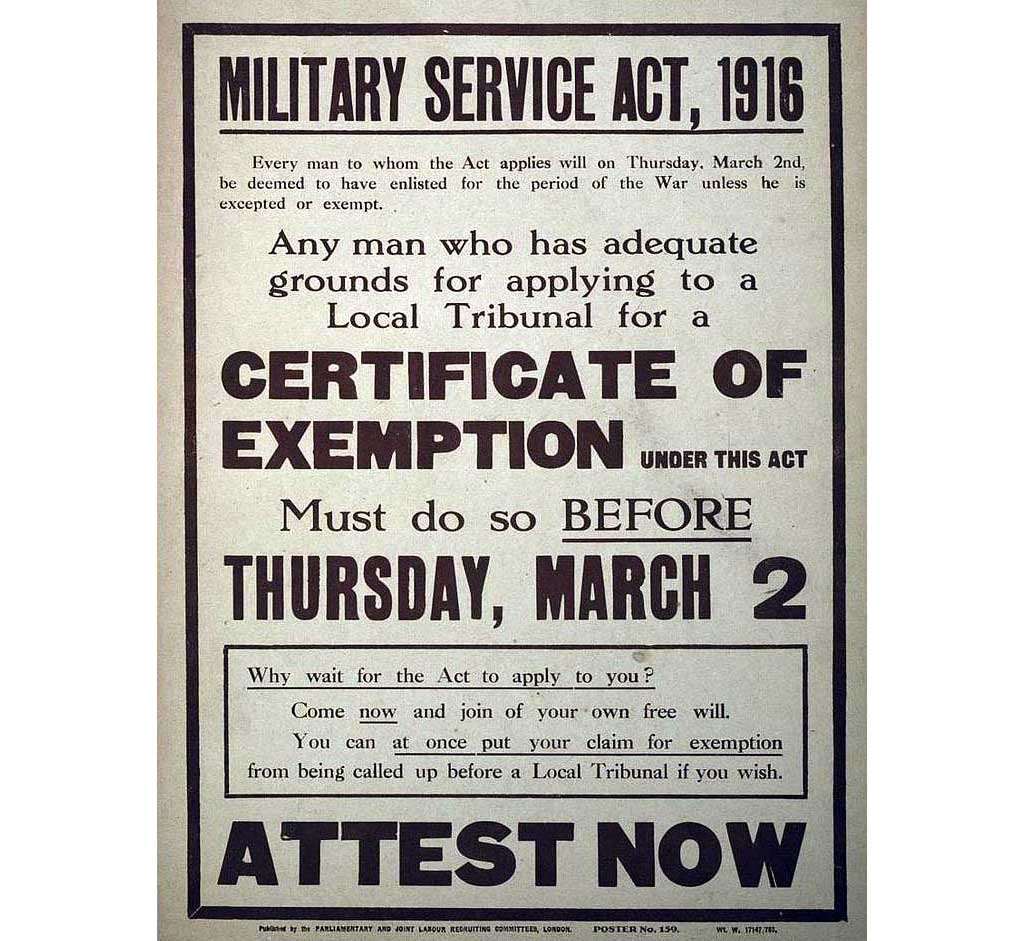
Poster explaining how to apply for exemption, 1916
English Heritage
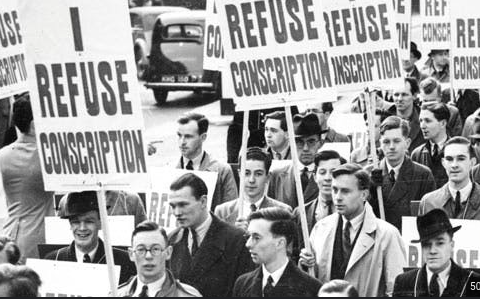
Men protesting conscription, 1917
Peace Pledge Union
WWII Conscription
In 1939, the United Kingdom declared war on Germany, entering WWII. It was later known as “the biggest and deadliest war in history.” In the end, the United Kingdom suffered tremendous losses.
“The military casualties incurred by the UK during the World Wars dwarf anything that has occurred since.”
Unknown author, UK Parliament

Troops awaiting evacuation from Dunkirk, 1940
The Guardian
On the same day that WWII began, the United Kingdom began conscripting soldiers. Nevertheless, it was not enough. In December 1941, another National Service Act was passed. This increased the age limit for men to 56, as well as beginning to conscript childless widows and unmarried women between the ages of 20 and 30. Among the few exempt from conscription were the “medically unfit” as well as farmers and engineers.
Since most citizens of the United Kingdom knew about the tremendous casualties and dire need for manpower, most of them (aside from conscientious objectors) were more than willing to shoulder the responsibility of helping their country hold their own in the war.
“When War broke out in September of that same year (1939) there was little opposition to conscription and the first National Service Act, which required that all men aged eighteen to forty-one register for military service, passed through all its stages, including Royal Assent, on a single day: 3 September 1939.”
Richard Vinen, Historian, National Service: A Generation in Uniform
“Britain just did not have the manpower to be able to fight across so many global fronts. ”
Unknown author, Imperial War Museums
As time went on, though, more people felt that conscription was depriving them of rights that they were entitled to.
“Sometimes local leaders were given a quota of men they had to fill and there are examples of men who were literally kidnapped and taken away to join the army.”
Walter Griffin, Imperial War Museums
“I can lay my hand on my heart and say truthfully that I have not yet met a woman in the twenties who is not in an awful state about conscription.”
Sparticus Educational Interviewee
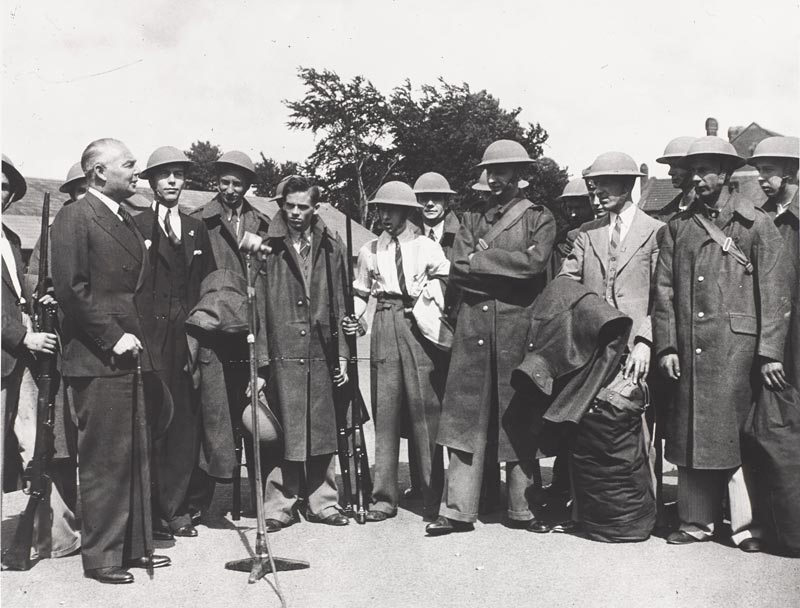
Reception of recruits, 1940
National Army Museum
All conscripts had to give up the rights to education, careers, and time with their families. The moment they became eligible, they had to register for conscription, meaning that their lives could be uprooted at any moment without warning.